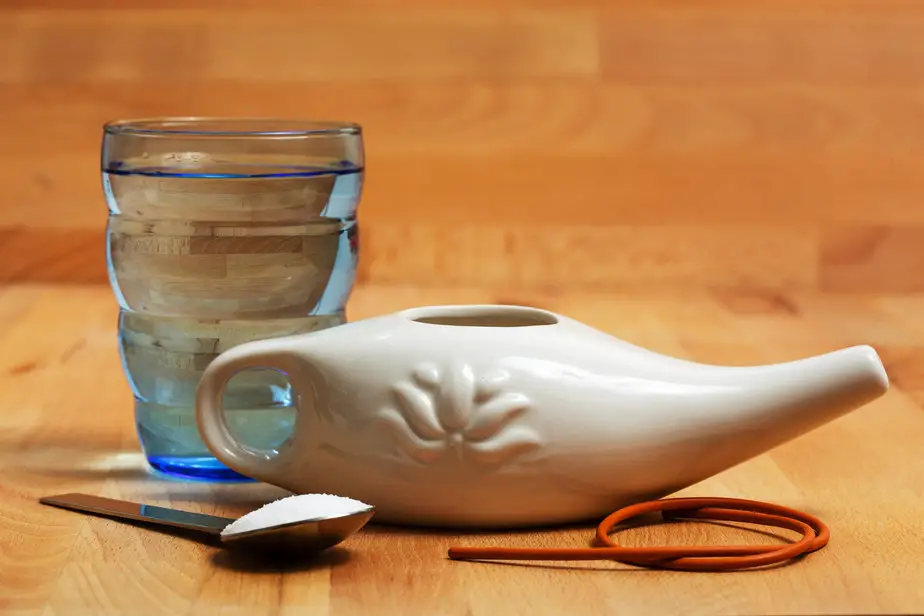Types of Neti and Their Benefits the technique of nasal cleansing, which is one of the important components of the yogic Shatkarmas is known as Neti Kriya. It cleans the sinuses, ease headache, tones up the optic nerves, and thus improves s
Types of Neti Kriya
Neti has roots in the traditional Indian way of life. Neti is one of several literary details regarding spirituality and yogic activities that the Vedic scriptures elaborate on. An analytical account of Neti can be found in the Upanishads and the Avadhuta Gita.
In Sanskrit, the word “Neti” signifies “Neither this” nor “Not this.” It has to do with getting rid of the poison during the purifying procedure. It suggests “No Toxins.”
Kriya translates as finished activity or doing something. Kriya is a term used in yogic culture to describe an action that is taken to accomplish specific objectives or results. It incorporates a variety of physical motions and breathing controls.
Neti Kriya is the third purification technique among the six actions (Shatkarma) discussed in Hatha Yoga Pradipika and Gheranda Samhita. The other five actions in Shatkarma are Dhauti, Nauli, Basti, Trataka, and Kapalbhati.
Essentials
- Neti pot – A Neti pot is an instrument usually small with a long spout on one side, meant to be inserted gently into one of the nostrils. It is also smaller in size and the shape is kept slender.
- A pinch of salt and lukewarm water ( Jal Neti)
- Rolled thread dipped in beeswax or a special type of rubber tube known as a catheter (Sutra Neti)
- Lukewarm milk ( Dugdha Neti)
- Lukewarm ghee ( Ghritha Neti)
Types of Neti
The four basic forms of Neti kriyas that are described and practiced in yogic methods for cleaning nasal cavities are: These are what they are:
- Jal Neti – It is a technique of nasal cleaning with the use of saline water.
- Sutra Neti – In this type of Neti Kriya, a roll of thread is dipped in beeswax and then used for nasal cleaning.
- Dugdha Neti – This technique is similar to the Jal Neti in which warm milk is used instead of warm saline water.
- Ghritha Neti – It is a technique of clearing the nasal passages with the help of warm ghee.
Note: First perform sutra Neti, then perform Jal Neti.
Ghrita Neti
Use ghee in place of milk or water in this. Ghee can be replaced with unrefined, unprocessed oil without any additional chemicals.
This Neti can be done using the same steps as Jal Neti. Put warm ghee in the Neti pot, then lean your head to one side. Now, place the spout inside one nostril and let the ghee flow out the other nostril.
The pain of the nose brought on by the saline water used in Jal Neti can be avoided using Ghrita Neti.
Benefits of Neti Kriya

- The nasal cavity and sinuses are drained by using Neti. It stimulates a number of the brain’s regulatory centers.
- Eliminates any debris, foreign objects, or antigens, such as microorganisms that can lead to diseases.
- Prevents allergic and rhinorrhea attacks.
- Types of Neti reduce the tendency for mouth breathing as it cleans the nasal passages.
- Types of Neti thorough cleansing of the upper respiratory tract. The complaints of common cold, cough, and tonsils can be reduced.
- It relieves asthma and bronchitis.
- It aids in the treatment of depression, anxiety, epilepsy, headaches, and migraines.
- It is beneficial for hysteric personalities and has a brain-smoothing effect.
- In addition to helping with eye issues, it clears the tear ducts.
- Tinnitus and middle ear infections are two examples of Neti ear problems that can be treated.
- Types of Neti not only nasal lining benefitted but also affect olfactory nerves. It restores a sense of smell and creates a balance between taste and digestive processes.
- Types of Neti bring harmony to the function of pineal and pituitary glands. The hormonal system becomes subtle.
- Beneficial for addiction recovery and lowering the urge to smoke
- Helps to manage anger and lessen irritable behavior.
Evidence-Based Benefits
Various studies and articles [efn_note] therapeutic effects of NetiKriya [source][/efn_note] describe its therapeutic effects on relieving various symptoms.
According to a paper [efn_note] Influence of Cleansing Technique (Neti) on Allergic Rhinitis, Common Cold and Sinusitis [source][/efn_note] published in the Journal of Traditional Medicine and Clinical Naturopathy, Neti is suggested as one of the best procedure for relieving allergic rhinitis and sinusitis.
A study was conducted in Karnataka, to assess the effect of yogic kriyas [efn_note] Assessment of the effect of Yoga therapy on Sinusitis [source][/efn_note] Sinusitis. A total number of 20 subjects and 20 controls were selected. They were taught yoga therapies. After a follow-up of 5 months, it was found that subjects were relieved from sinusitis.
A literature survey [efn_note] Literature Survey for the health of the nasal sinuses and the nasal passages [source][/efn_note] elaborates on various benefits and effects of Neti on the human body.
Types of Net I The mode of action of Neti is also briefly described in this study.
1. Mechanical action: removal of dust, foreign particles, and allergens with the flow of water.
2. Osmotic action: the salt used in Jal Neti has an anti-swelling effect on the nasal mucosa.
3. Thermal action: the warm water usually near 42◦ C proves to be bactericidal and prevents the infection from rhinovirus.
4. Neurovegetative action: It stimulates the receptors and also has effects on vagal responses. It is proven to be beneficial in the treatment of Bronchial Asthma.
5. Psychological action: unwanted and disturbing feelings are alleviated. A relaxed state of emotional stability is achieved.
Spiritual Dimension of Neti Kriya

Neti has several advantages and impacts that go well beyond its physical effects. It reflects the metaphysical consequences since hatha yoga incorporates it.
When one does Naeti the flow of energy is just as important as the flow of water, milk, thread, or ghee into the nasal canal.
Ajna Chakra or the third-eye chakra also activated through its consistent practice.
Numerous yogis in ancient India used this Shatkarma to enhance their focus and meditation.
The likelihood of developing allergies and suffering from health issues has increased along with environmental degradation. It has long been said that “prevention is better than treatment.” By incorporating these habits into our daily lives, we can not only prevent these problems but also vastly enhance the quality of our lives.
Conclusion
Neti Kriya is a non-pharmacological modality for treating various health-related problems. It is not only limited to the physical benefits but has a positive impact on psychological and spiritual health also. It is easy and feasible to perform once learned attentively.
It is one of the significant Shatkarma, according to the Hatha Yoga Pradipika, and it contributes significantly to the body’s purification. Renowned yogis engaged in it.
Thus, making yoga treatment a habit and taking some time away from a busy schedule are both urgently needed. You can keep a balance between the spiritual and the essential aspects of life with its assistance.





















